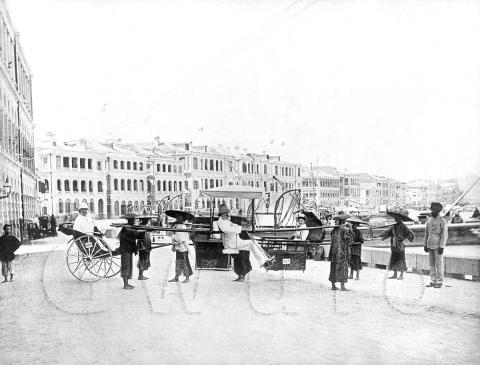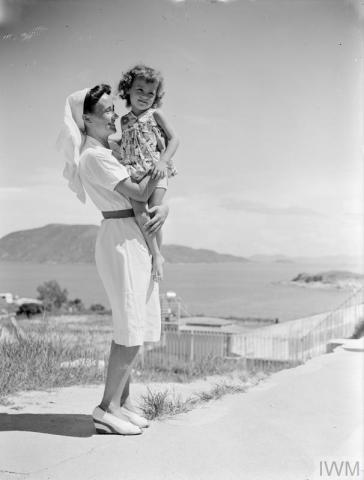About a third of the Illustrated London News (ILN) page is taken up with sketches of what they describe as ‘Jinrickshaws’ and ‘Portable Chairs or Litters’. This photo shows them too, though its title is ‘Jinrickisha and carrying chairs’. Today we call them rickshaws and sedan chairs.
Sedan chairs were the older of the two. The ILN’s readers would have recognised them, but would have seen them as quaint and old fashioned. Sedan chairs had been popular in London in the 1600s and 1700s, but had disappeared from the streets by the mid-1800s.
Sedan chairs had a much longer history in China, and were still in widespread use in the 1840s. They quickly became the standard means of transport in Hong Kong. As seen in the photo above, there were several different styles of chair in use. Front and centre is the chair carrying the bearded man wearing a topee (sun hat).
He’s using the most basic form of chair, a simple seat and footrest suspended from two poles, minimising the weight for the carriers.
Beyond him, the woman is sitting in the more usual type of chair where the passenger sits semi-enclosed. I’m used to seeing her style of chair with the roof and the man’s lighter chair without, but here they’re reversed, with the woman relying on her parasol for shade.
A team of four men carry her chair. Sometimes the larger team was needed to handle a long, uphill climb, but other times it was used as a way to show off the rider’s status. Here’s the Prince of Wales visiting Hong Kong in 1922, his sedan chair carried by a team of eight!
Despite the sedan chair’s early success, they were quickly overtaken by the newly arrived rickshaws. Originating from Japan, the rickshaw first appeared on Hong Kong’s streets in 1874. That was a privately owned vehicle, but it started a trend that led to rickshaws being made available for public hire in 1880.
If you turn back to the ILN sketches and look at the rickshaw on the left, can you spot what is unusual about it?







